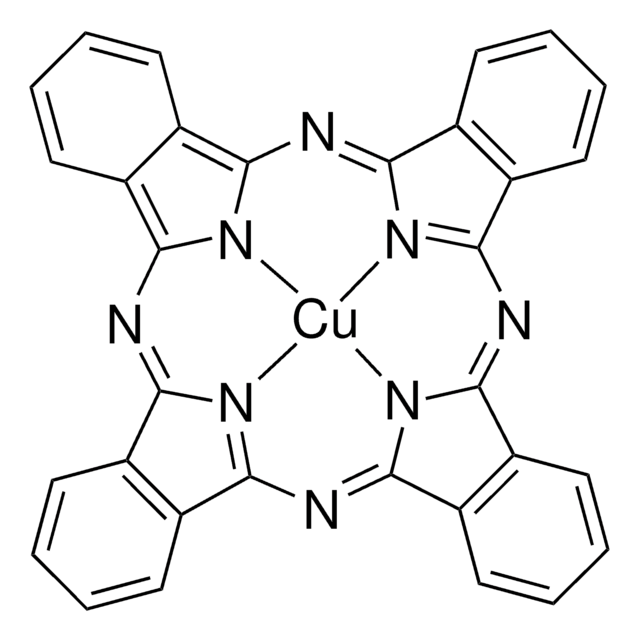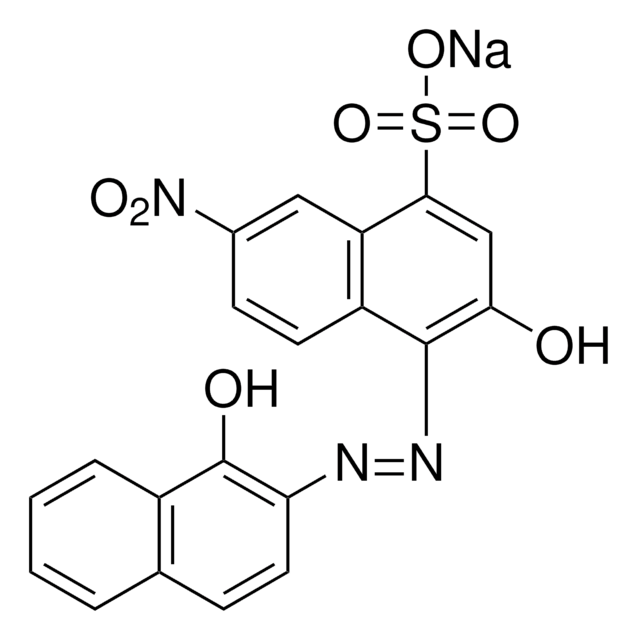432199
Leucoberbelinblau I
Dye content 65 %
Synonym(e):
LBB
About This Item
Empfohlene Produkte
Form
powder
Zusammensetzung
Dye content, 65%
mp (Schmelzpunkt)
>300 °C (lit.)
Löslichkeit
water: 50 g/L
λmax
253 nm
Anwendung(en)
diagnostic assay manufacturing
hematology
histology
Lagertemp.
room temp
SMILES String
CN(C)c1ccc(cc1)C(c2ccc(cc2)N(C)C)c3ccccc3S(O)(=O)=O
InChI
1S/C23H26N2O3S/c1-24(2)19-13-9-17(10-14-19)23(18-11-15-20(16-12-18)25(3)4)21-7-5-6-8-22(21)29(26,27)28/h5-16,23H,1-4H3,(H,26,27,28)
InChIKey
MCKLFIWDQVFMEK-UHFFFAOYSA-N
Allgemeine Beschreibung
Anwendung
Signalwort
Danger
H-Sätze
Gefahreneinstufungen
Eye Dam. 1 - Skin Corr. 1B
Lagerklassenschlüssel
8A - Combustible corrosive hazardous materials
WGK
WGK 3
Persönliche Schutzausrüstung
Eyeshields, Faceshields, Gloves, type P3 (EN 143) respirator cartridges
Analysenzertifikate (COA)
Suchen Sie nach Analysenzertifikate (COA), indem Sie die Lot-/Chargennummer des Produkts eingeben. Lot- und Chargennummern sind auf dem Produktetikett hinter den Wörtern ‘Lot’ oder ‘Batch’ (Lot oder Charge) zu finden.
Besitzen Sie dieses Produkt bereits?
In der Dokumentenbibliothek finden Sie die Dokumentation zu den Produkten, die Sie kürzlich erworben haben.
Unser Team von Wissenschaftlern verfügt über Erfahrung in allen Forschungsbereichen einschließlich Life Science, Materialwissenschaften, chemischer Synthese, Chromatographie, Analytik und vielen mehr..
Setzen Sie sich mit dem technischen Dienst in Verbindung.



